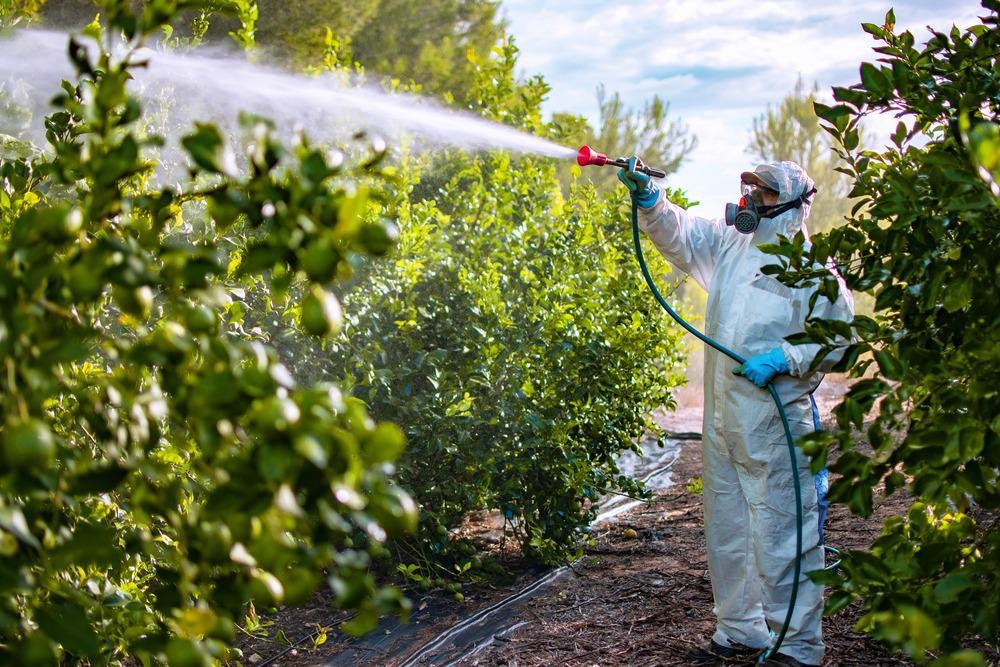In a recent study published in the Journal of Controlled Release, researchers analyzed the critical aspects and current advancements in nanoporous carrier materials for targeted delivery of pesticides.

Study: Nanoporous materials for pesticide formulation and delivery in the agricultural sector. Image Credit: David Moreno Hernandez/Shutterstock.com
Environment-friendly pesticides with high efficacy, effective targeted delivery, minimum runoff, low side activities, and sustainability are very important in the agricultural industry to counter the loss in crop yields due to pests.
The key component of any pesticide formulation is its active ingredients (AIs) that are loaded onto varieties of carriers.
AI Carriers
A variety of pesticides including acaricides, bactericides, fungicides, herbicides, insecticides, larvicides, rodenticides, and nematicides are used to protect the crops from over 67000 species of various types of pests.
As reported by the European Commission in 2019, about 1387 AIs are used in pesticide formulations that suffer from undesired losses due to biodegradation, photodegradation, less dispersion, and surface runoff.
In addition to mutation and growing AI resistance of pests, the non-selective nature, uncontrolled release, and the non-target side effects such as toxicity to water, soil, air, humans, and animal are major concerns in formulating pesticides.
The pesticide formulations consist of specific AIs and additives that modify their physical nature to improve their performance, sustainability, and effectiveness of delivery viz. clay, emulsifiers, propellants, solvents, and surfactants.
Carboxymethylated and polysaccharide-modified AIs show improved hydrophilicity to counter surface runoff due to the hydrophobic nature of certain AIs.
Moreover, nanoporous materials are promising AI carrier candidates owing to their large pore density, controlled pore size, high specific surface area, surface functionalization with verities of functional groups, improved hydrophilicity, and photochemical and thermal stability.
Types of Nanoporous AI Carriers
Inorganic nanoporous additives include clays, zeolites, nano-silica, and metal/metal oxides.
Clay and clay minerals are suitable inert additives for sustained release of pesticide formulations owing to their small particle size, large specific surface area, high adsorption ability, ion-exchange capability, ease of surface modification, and colloidal properties.
Some commonly used clay minerals are bentonite kaolinite (Kaol), halloysite nanotubes (HNT), montmorillonites (MMT), and sepiolite.
Organic cations such as benzyl trimethyl ammonium (BDMHdA), benzyl triethyl ammonium (BTEA), benzyl tri butylammonium (BTBA), phenyl trimethylammonium (PTMA) are used to form clay-cationic composites for hydrophobic herbicides.
Nanozeolite composites are effective insecticides against C. Maculatus, Oryzaephilus surinamensis, Rhyzopertha dominica, Sitophilus oryzae, Tribolium castaneum, and Tyrophagus putrescentiae.
Similarly, nano-silica has shown controlled release of abamectin, avermectin, azoxystrobin, citridiol, and methyl eugenol. Additionally, inorganic nanoparticles (NPs) such as Cu/CuO, Ti, Zn/ZnO, and silver (Ag) are well-known natural insecticides.
Diniconazole fungicide loaded NH2-Fe-MIL-101 and triazolone pesticide loaded M-PDA–MCM-41 are some of the known metal-organic-framework (MOF) nanoporous carriers.
Several organic polymers such as alginate, chitosan, lignin, and starch, which are derived from natural sources are suitable AI carriers in the form of membranes, NPs, nanofibers, gel particles, and sponges owing to their high availability, non-toxicity, biodegradability, and cost-effectiveness.
Alginate, obtained from brown algae, is an anionic polysaccharide, which is used to encapsulate AIs in hydrogel form.
The encapsulation efficiency of sodium alginate was 97% for the thiram fungicide. Similarly, chitosan is a cationic polymer obtained from the shells of crabs, conches, lobsters, mussels, and shrimps, which is highly soluble in organic and inorganic acids, but insoluble in organic solvents and water.
However, carboxymethylated and polysaccharide-modified synthetic chitosan are promising hydrophilic, non-toxic, and biocompatible pesticide carriers.
Furthermore, carbon-based materials such as citric acid-mounted multi-walled carbon nanotubes, graphene oxide-poly(N-isopropyl acrylamide), and activated carbon-based composites are good encapsulation materials for zineb and mancozeb fungicides.
Conclusions
In summary, this paper highlights some of the currently known natural or synthetic, inorganic or organic, toxic or biocompatible nanoporous materials as the carrier of AIs in pesticide formulation.
These are clay minerals, zeolites, nano-silica, metal NPs, porous metal oxides, organic polymers, alginate, chitosan, and carbon-based composites.
Due to their high specific surface area, large pore density, regulated pore size, effective and controlled targeted delivery of AIs, minimal leaching, and reduced adverse effects on the surroundings, these nanoporous materials are promising AI loaders.
Continue reading: The Effect of Nano-Fertilizers on Sustainable Crop Development
Reference
Singh, G., Ramadass, K., Sooriyakumar, P., (2022) Nanoporous materials for pesticide formulation and delivery in the agricultural sector, Journal of Controlled Release. Available at: https://doi.org/10.1016/j.jconrel.2022.01.03
Disclaimer: The views expressed here are those of the author expressed in their private capacity and do not necessarily represent the views of AZoM.com Limited T/A AZoNetwork the owner and operator of this website. This disclaimer forms part of the Terms and conditions of use of this website.